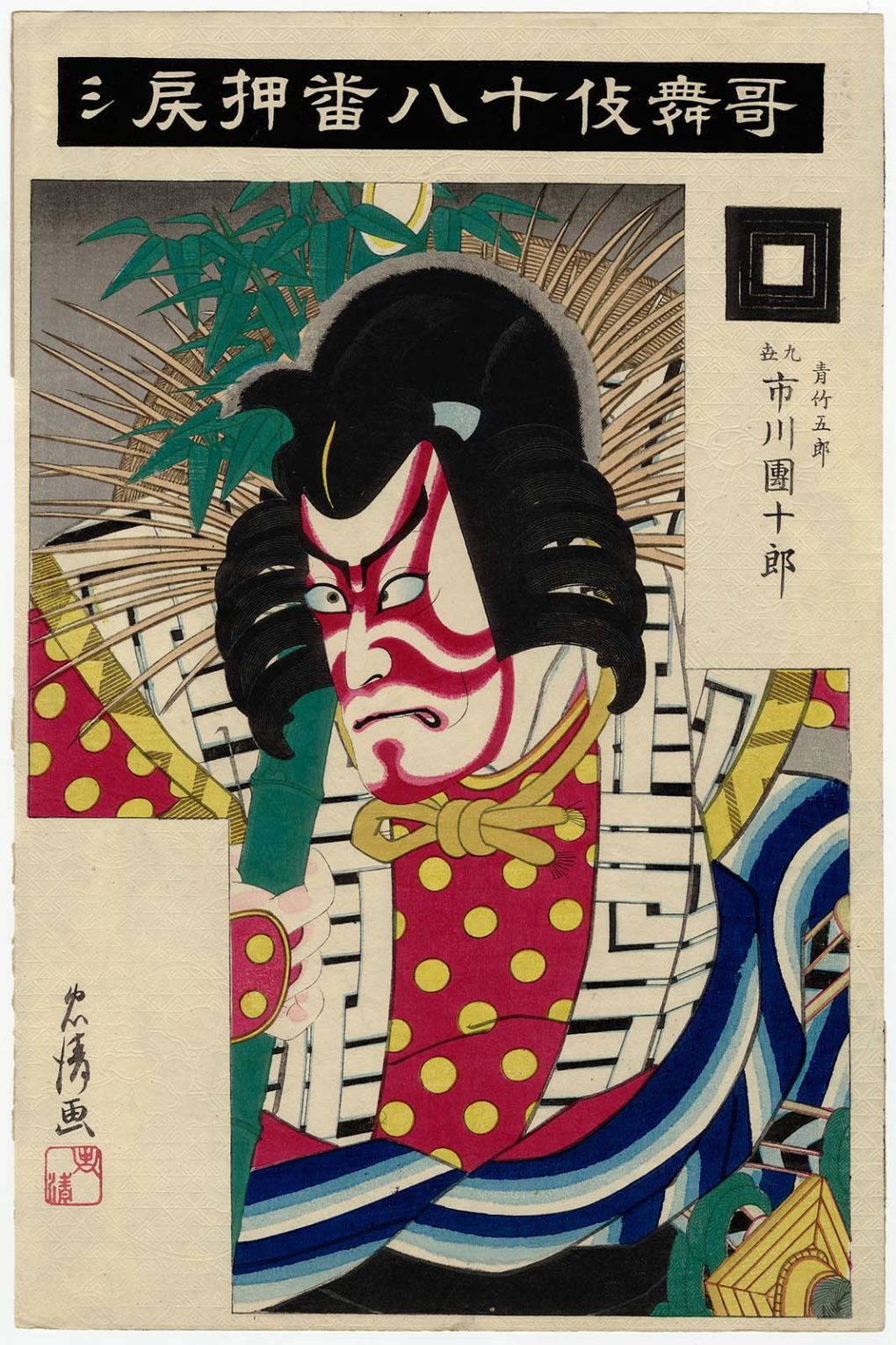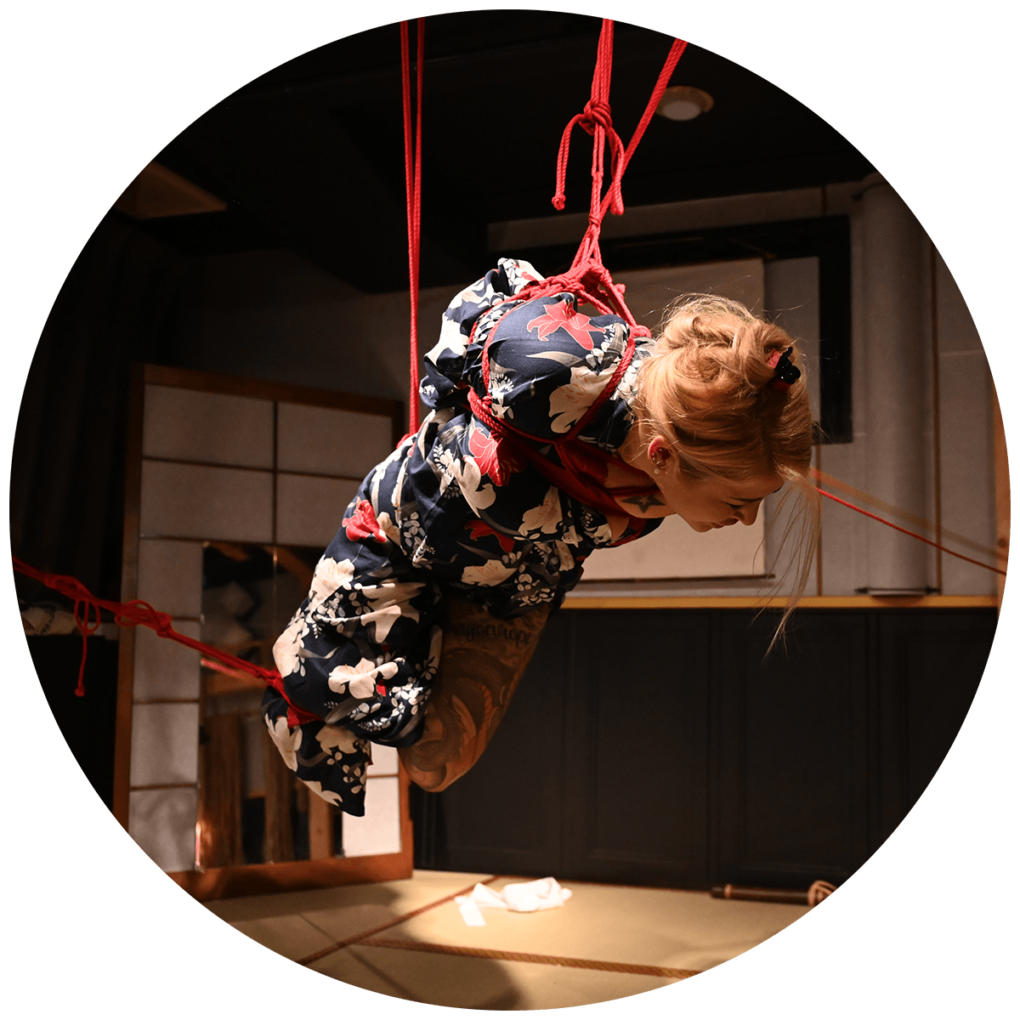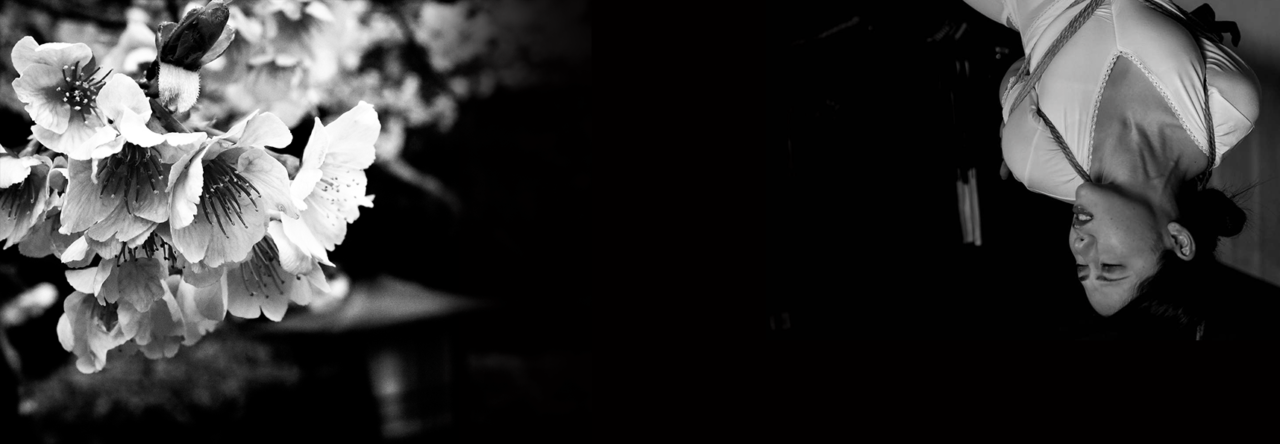Seme (責め) means “torture” or “torment” and refers to restrictive or painful shibari. Traditional patterns, such as the Gyaku-Ebi (逆海老吊り) fall under this, for example.
The term originates from the Japanese Middle Ages and is also used there in theater. In the Kabuki theater of the Edo period, this term was used to describe particularly gruesome death scenes. Thus, the relationship of shibari with the theater is also confirmed in this technique.
The artistic representation of pain is thus part of the performance.

However, pain plays a different role in Japan than in Europe and the USA. In the West, seme is often understood as “painful”. Compression, and restrictive postures are equally important. Numerous shibari styles therefore contain complex patterns that include steadily increasing rope tensions.

Seme can be used with great emotional closeness, but also very distant and “cool”. It occurs in every style. Even in Yukimury-Ryû, which is known for its “stroking rope” (Aibu-nawa, 愛撫縄), it plays a role. Seme thus has a physical, emotional and verbal dimension.
In Yukimura-Ryû, the so-called kotoba-zeme plays an important role. This does not have to involve verbal (acted) belittling, but can also simply create a strong emotional reaction through intense whispering or breathing. There is a connection between the kotoba-zeme and the use of ki (気) when both are connected with the breath.



